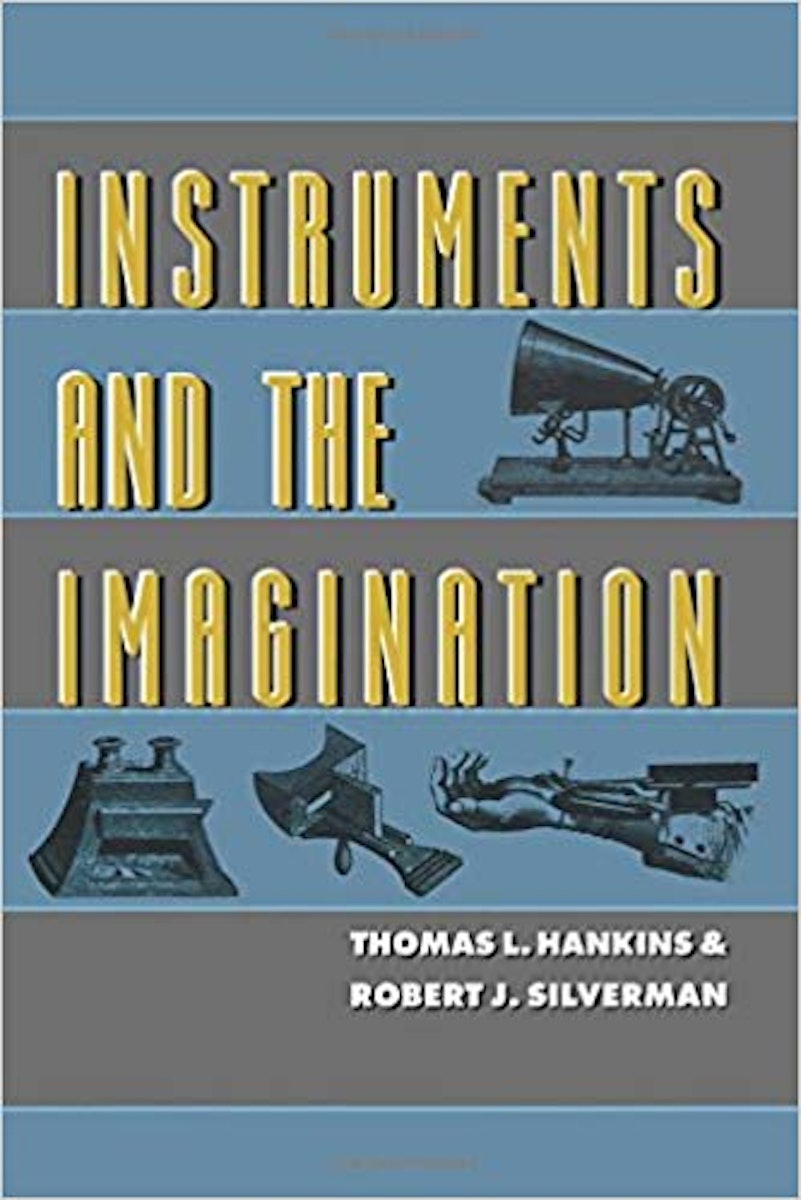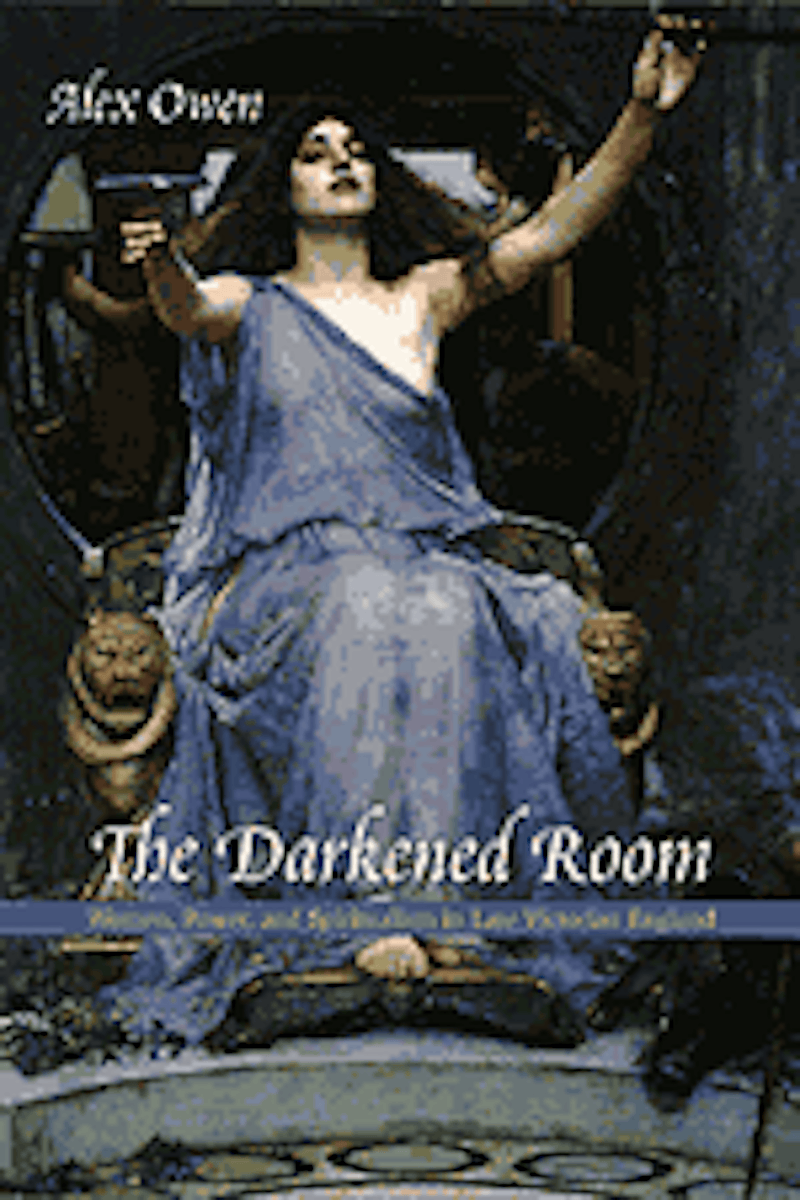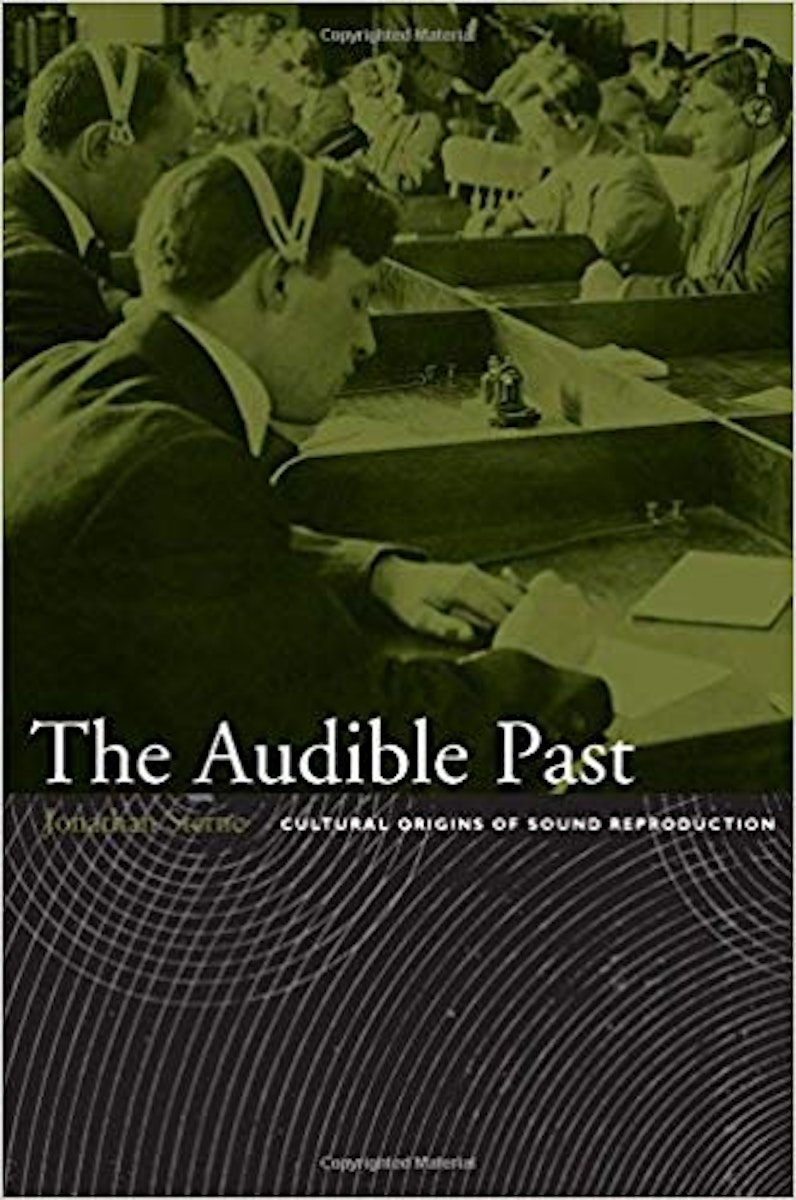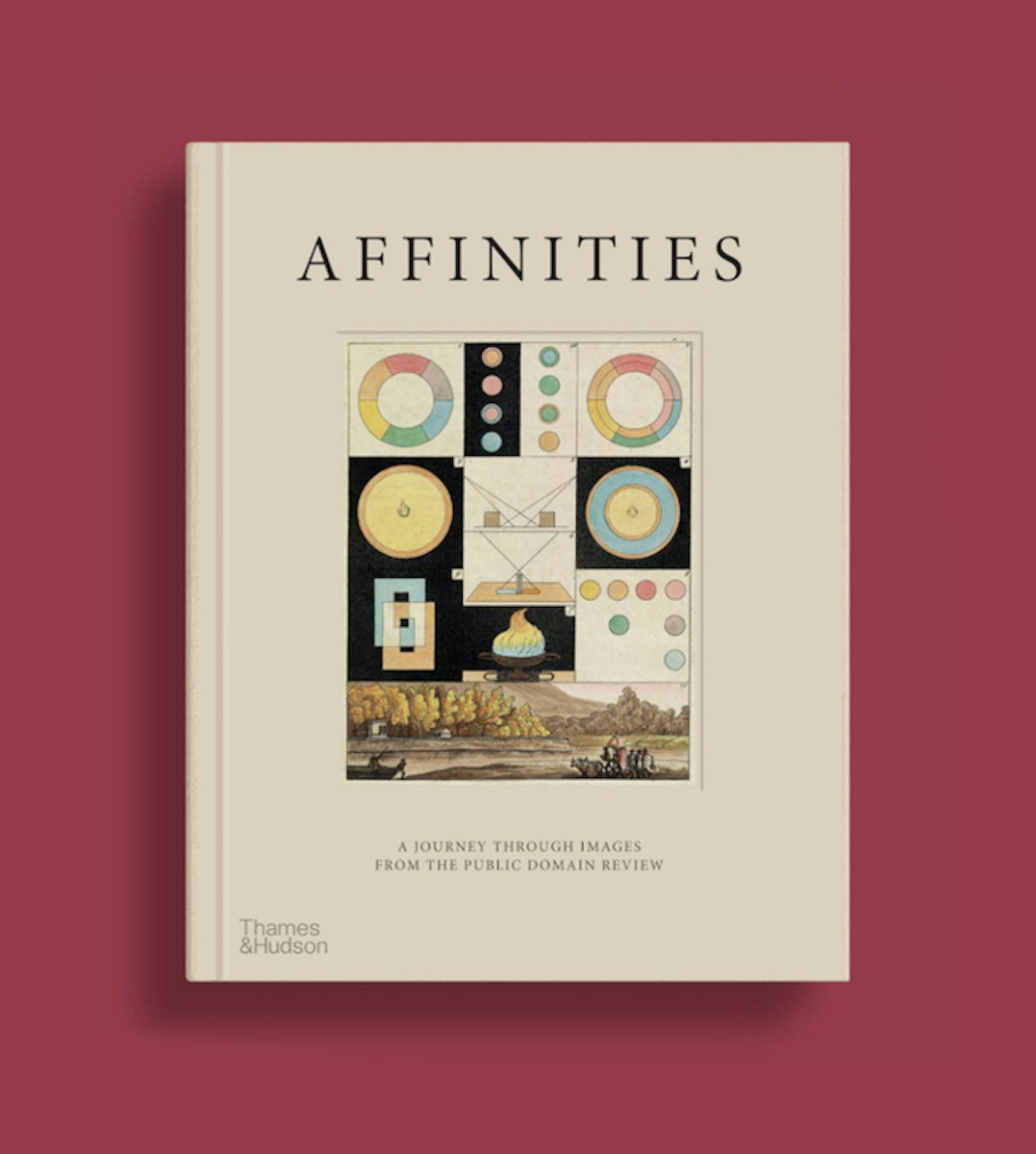
Picturing a Voice Margaret Watts Hughes and the Eidophone
Of the various forms the nascent art of sound recording took in the late nineteenth century perhaps none was so aesthetically alluring as that invented by Margaret Watts Hughes. Rob Mullender-Ross explores the significance of the Welsh singer’s ingenious set of images, which until recently were thought to be lost.
November 27, 2019
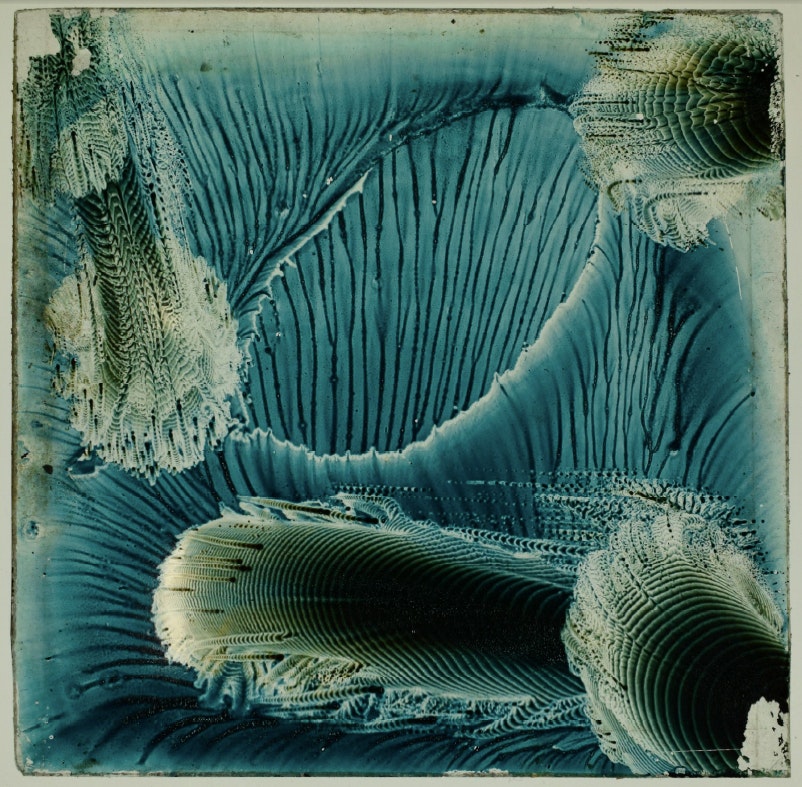 Scroll through the whole page to download all images before printing.
Scroll through the whole page to download all images before printing.A so-called Impression Figure by Margaret Watts Hughes, pigment on glass, date unknown. Courtesy of Cyfarthfa Castle Museum and Art Gallery.
Recorded sound began as much a visual and textual concern as an auditory one. From its inception the phenomenon necessarily relied upon the act — via the medium of a vibrating surface — of converting sound waves into physical motion, and a subsequent act of inscription. Probably the earliest practical example of such a recording apparatus was Édouard-Léon Scott de Martinville’s Phonautograph. Patented in 1857, it consisted of a mechanism of vibrating diaphragm, lever, and a hog’s bristle which scratched sound into soot-coated paper or glass. Scott de Martinville conceived the marks produced as a form of “auto-stenography”, where the inflections and intonations of an individual’s speech might be read by anyone with the required patience to learn this new form of “script”. This new-found visibility of sound fuelled much debate between artists, musicians, scientists, and even lawyers about what precisely these scratches and squiggles constituted. Were they a kind of writing, an expository method of display and measurement, or a mutable and plastic material — a site of aesthetic transformation and potential production? Audio-visual correspondences as aesthetic concerns — often suffused with occult or spiritualist sensibilities — grew to become well established in the more esoteric visual and musical practices of the late nineteenth century.
Even Alexander Graham Bell felt the seductive promise of a commingling of the auditory and the visual when, on having successfully demonstrated a new communication device he called the Photophone, he exclaimed to his father:
I have heard articulate speech produced by sunlight! I have heard a ray of the sun laugh and cough and sing!. . . I have been able to hear a shadow, and I have even perceived by ear the passage of the cloud across the sun’s disk!1
Bell had heard a signal (light) that had never previously existed within the auditory realm; already the provenance of sound was undermined. This ingenious device consisted of a mouthpiece attached to a chamber capped with a thin mirror. When spoken into, the mirror would vibrate, thereby modulating a beam of sunlight — effectively encoding it with the sound. This vibrating light beam was then picked up and turned back into sound by a mirrored parabolic receiver some distance away. As Steven Connor (after Friedrich Kittler) has noted, the communications landscape of the late nineteenth century was characterised by “a kind of conversion mania, as inventors and engineers sought more and more ways in which different kinds of energy and sensory form could be translated into each other.”2
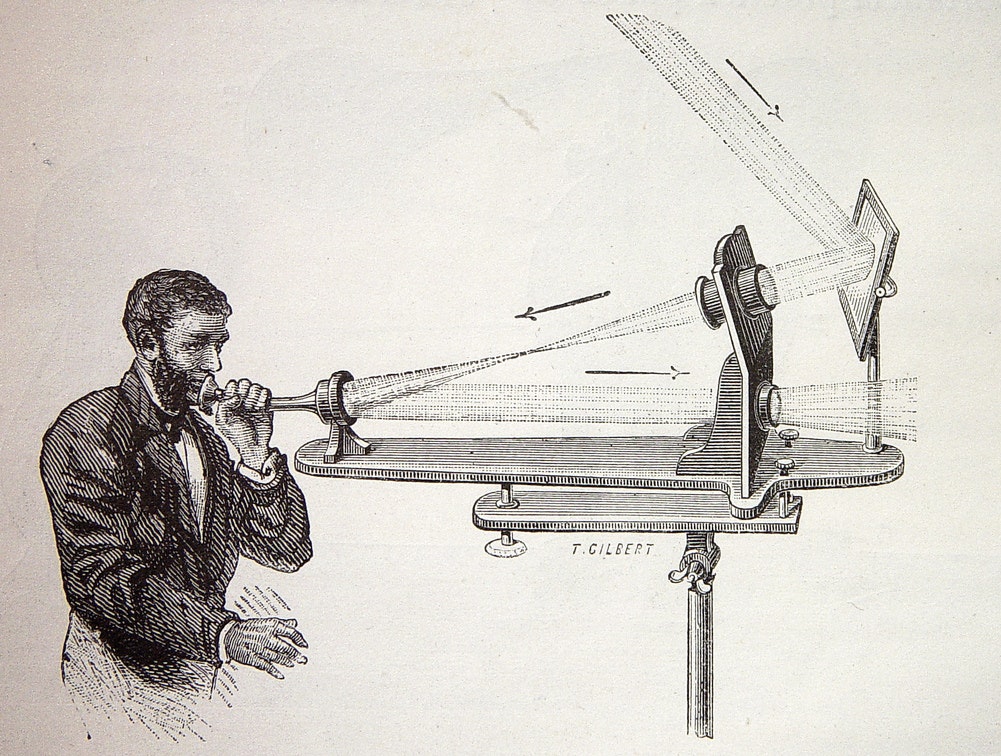 Scroll through the whole page to download all images before printing.
Scroll through the whole page to download all images before printing.Illustration of the Photophone’s transmitter, from El mundo físico (1882) by Amédée Guillemin — Source.
The Welsh popular singer and philanthropist Margaret (Megan) Watts Hughes entered this discourse with a device almost identical in most respects to the transmitter of Bell’s Photophone — one which similarly combined the auditory with optical phenomena. Her “Eidophone”, which she had conceived of and produced in order to measure the power of her voice, consisted of a mouthpiece leading to a receiving chamber, over which was stretched a rubber membrane, or diaphragm. Her experiments with this device involved sprinkling a variety of powders onto its surface, then singing into it to see how far these powders would leap. This activity would soon take an unexpected turn:
I had been working on this path until May, 1885, when on one occasion as I sang I noticed that the seeds which I had placed on the India rubber membrane, on becoming quiescent, instead of scattering promiscuously in all directions and falling over the edge of the receiver onto the table, as was customary when a rather loud note was sung, resolved themselves into a perfect geometrical figure.3
Illustrations of these phenomena — which she termed Voice Figures — can be found in her first publication, an article in the Century from 1891. Arranged in order of increasing complexity, the figures display a clear hierarchy of forms, from the simple “primitive” and geometrical, to more complex figures that look more like floral shapes. Here, we can detect the beginnings of Watts Hughes’ passion for the project; what began as a technique for measuring an aspect of vocal prowess becomes an exploration of visual forms created through the resonant interaction of voice, instrument, and materials.
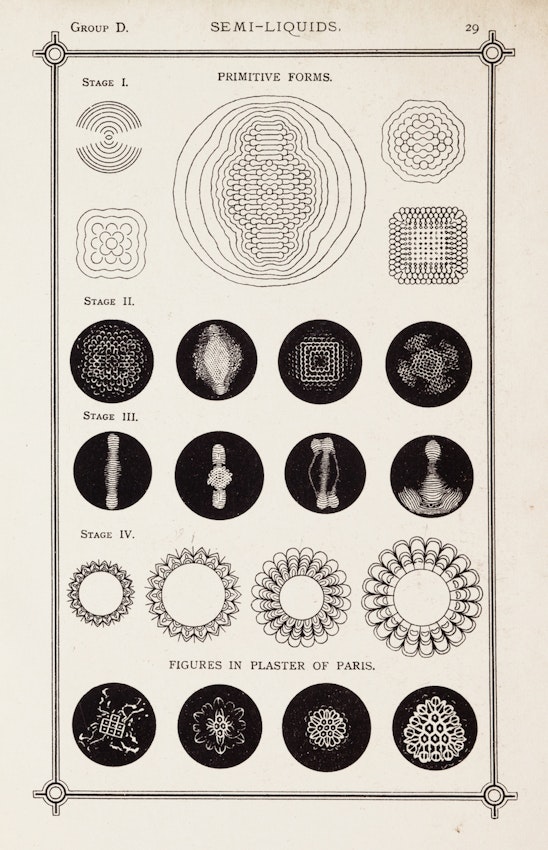 Scroll through the whole page to download all images before printing.
Scroll through the whole page to download all images before printing.Page from Margaret Watts Hughes’ The Eidophone (1904) — Source: author’s copy.
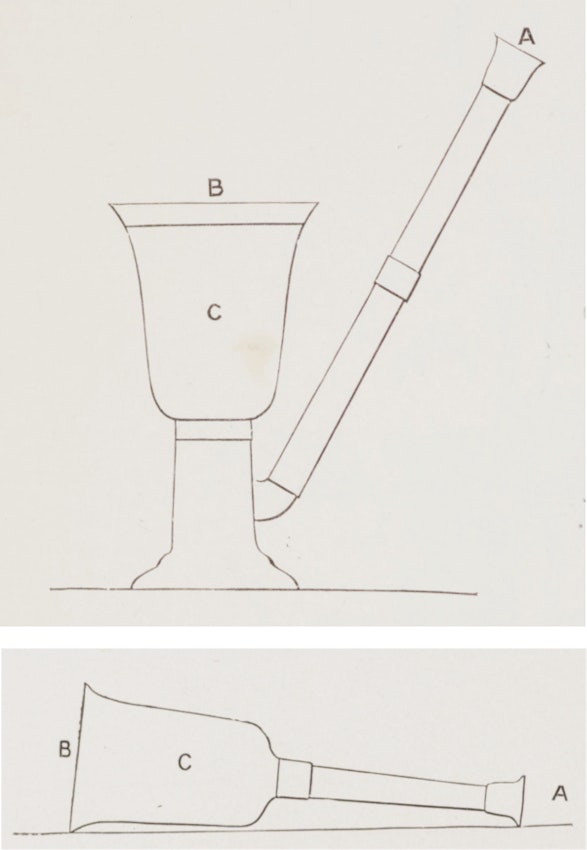 Scroll through the whole page to download all images before printing.
Scroll through the whole page to download all images before printing.Two different kinds Eidophone — the “hand Eidophone” (bottom) could be moved across the glass plates from above to create the more complex Impression Figures. From Margaret Watts Hughes’ The Eidophone (1904) — Source: author’s copy.
From Watts Hughes’ writing, we know that she went on to experiment with placing various consistencies of pastes and liquids on the instrument as a way of introducing binding mediums to “fix” the figures she made, resulting in a series of figures that both resembled and were named after flowers. These images were produced by placing the Eidophone’s diaphragm face up: the figure would then be sung into existence, and the glass plate then placed on top to capture it. An 1890 article in the Pall Mall Gazette contains both an interview with Watts Hughes and a valuable description of this part of her practice. For example, when a “daisy” is to be created,
the substance placed on the disc [i.e., the diaphragm] creeps together at the centre of the membrane at the command of the first note, which is obeyed as unhesitatingly as the bugle horn in a soldiers’ camp. Another note follows of a different calibre, and out from the centre all around shoot small petals shaped exactly like those of the daisy. But perhaps the note has not been quite so full as it should have been, and the petals not as symmetrical as they ought to be. Then comes one of the most marvellous parts of the process, for once more the voice commands, and immediately they rush back and amalgamate once again at the centre, to reappear at the next note, smoothly and shapely.4
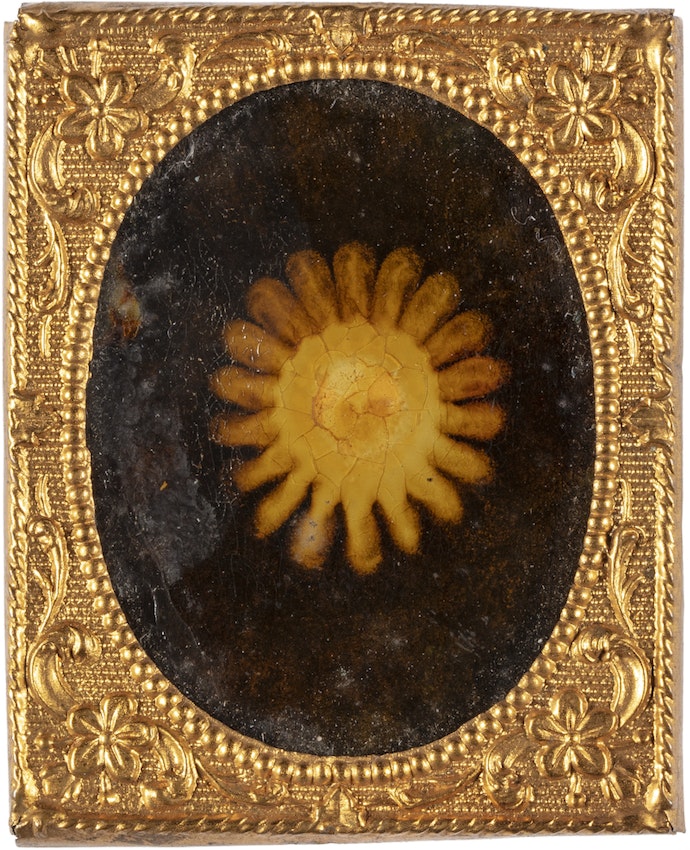 Scroll through the whole page to download all images before printing.
Scroll through the whole page to download all images before printing.Daisy voice figure by Margaret Watts Hughes, pigment on glass, date unknown. Courtesy of Cyfarthfa Castle Museum and Art Gallery.
While Watts Hughes’ own writing about the process tends to be from a traditional musical perspective (depicting the “dry”, static voice figures derived through different pitches above a musical stave, for example), in the above account we get a distinct sense of the power and textures of her voice, and of the timbres she may have employed — although the reference to the bugle may also have been a nod to the Eidophone’s unusual appearance. Her vocal training is further detectable in a group of works she called Impression Figures, which are by far the most visually and symbolically rich of the figures she produced. These were made by first coating a glass plate and the diaphragm of a “hand Eidophone” with pigment, then passing the diaphragm of the Eidophone over the plate’s surface while singing a note into its mouthpiece:
The plate and disc [i.e. diaphragm] being both coated as before, the plate is laid upon the table, the wet colour side uppermost. The disc is now reversed, set vibrating, and, while vibrating is moved along the surface of the wet plate. As it glides over the moist surface, while a steady note is sustained, it leaves behind it a register of every vibration, recorded with the strictest accuracy.5
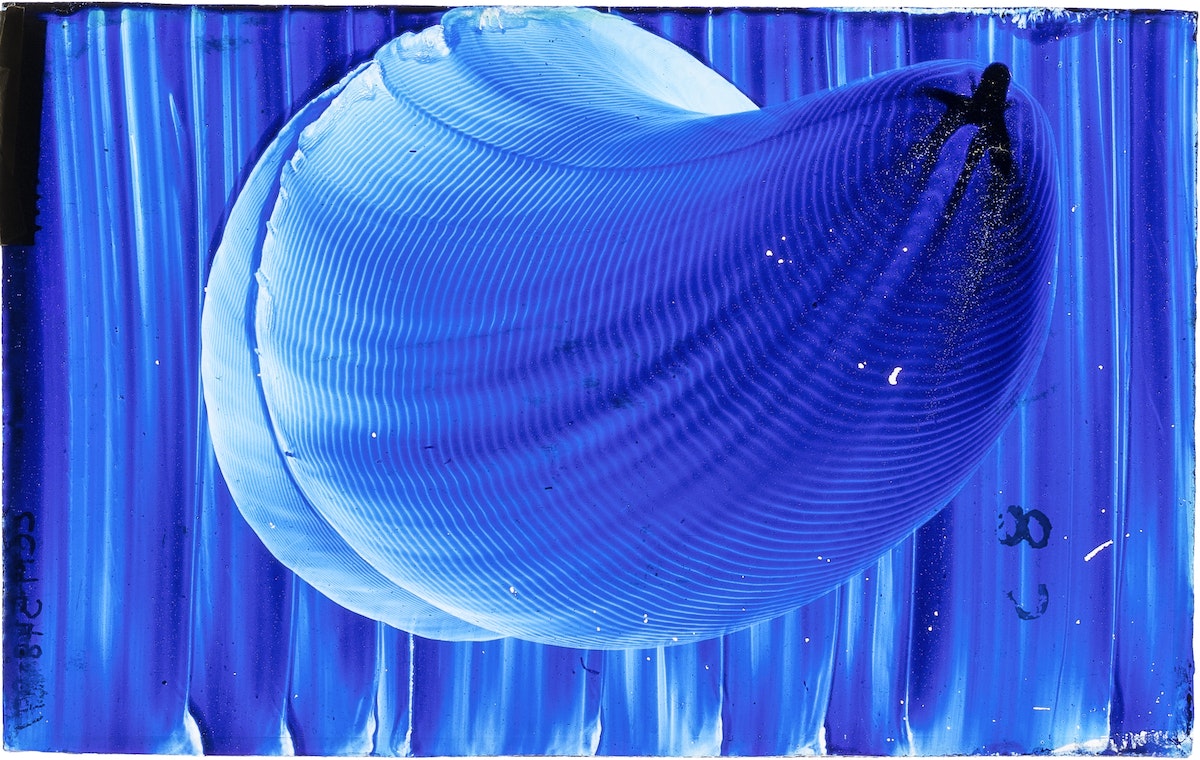 Scroll through the whole page to download all images before printing.
Scroll through the whole page to download all images before printing.Single pitch Impression Figure by Margaret Watts Hughes, pigment on glass, date unknown. Courtesy of Cyfarthfa Castle Museum and Art Gallery.
These figures fall into roughly two categories. The first might be described as “acoustically motivated”, since as a group they depict discrete pitches (often annotated with musical notes), are all fairly small, and are a uniform blue in colour. These blue figures appear to show a single gesture of instrument and voice, with striations sweeping across the surface of the plate, before terminating in a denser area of pigment where the passage of the Eidophone slows, and then is lifted from the surface at the end of its journey. Several contain two or even three figures of different pitches for comparative purposes, the overall impression being that these plates represent a period of scientifically inspired research.
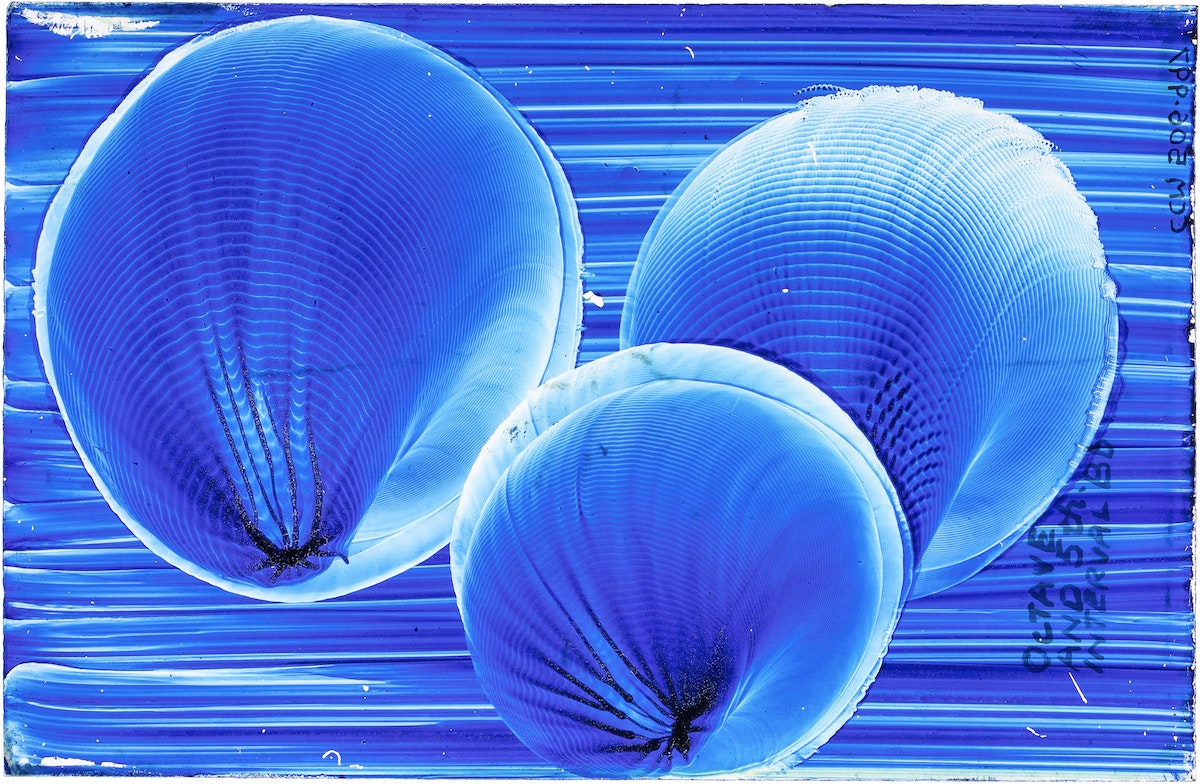 Scroll through the whole page to download all images before printing.
Scroll through the whole page to download all images before printing.Three pitches in an Impression Figure by Margaret Watts Hughes, pigment on glass, date unknown. Note the writing: “Octave and 5th interval Bb”. Courtesy of Cyfarthfa Castle Museum and Art Gallery.
The largest of the Impression Figures, however, are the most startling images, and are clearly directed toward a completely different purpose. Rather than recording only pitches (although many of these images do contain elements of pitch-derived patterns), these images consist of complex reticulations and textures which are smeared and manipulated across the plate in a simulation of plant-like shapes.
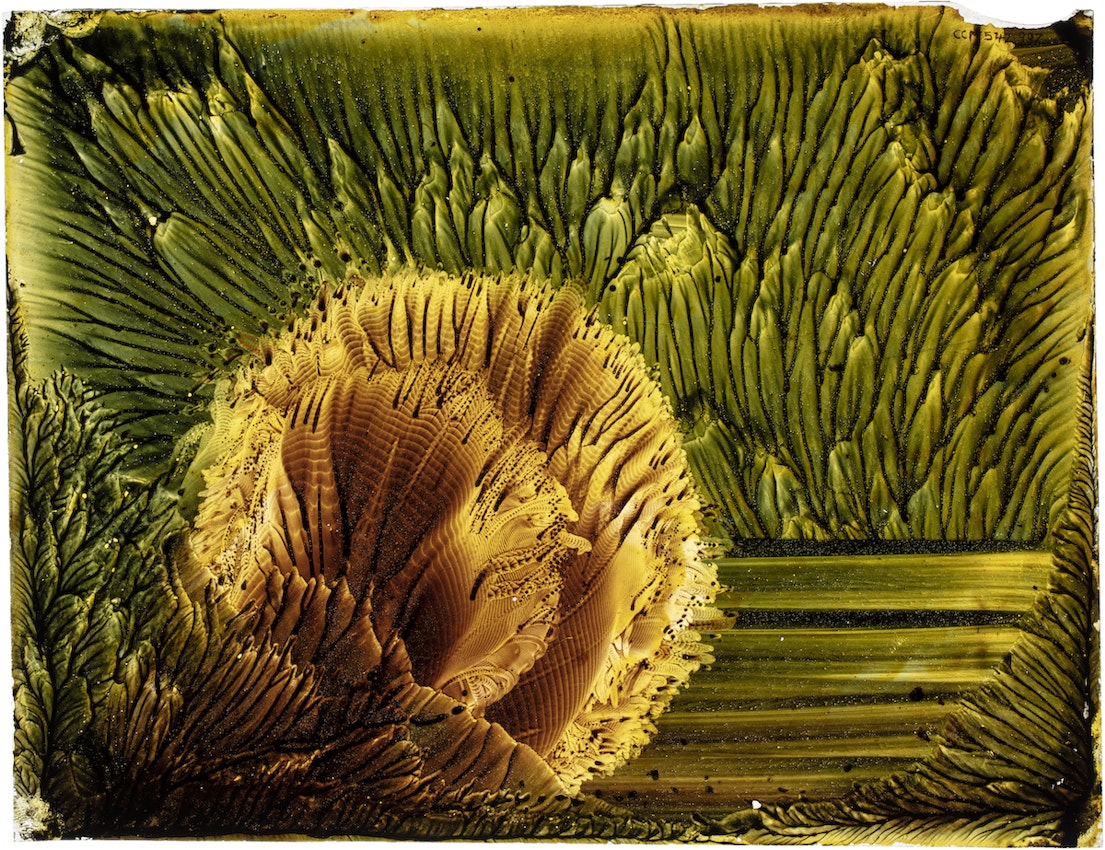 Scroll through the whole page to download all images before printing.
Scroll through the whole page to download all images before printing.Plant forms, an Impression Figure by Margaret Watts Hughes, pigment on glass, date unknown. Courtesy of Cyfarthfa Castle Museum and Art Gallery.
Close examination of these larger plates reveals a variety of elements in abundance. Spatters and unexpected ruptures burst from the edge of the vibrating diaphragm, some of which emerge seamlessly and carry the same frequency of pattern before terminating in a darker patch of higher pigment density; a profusion of serpentine emissions emerging from the central figure body — visually (although perhaps not mathematically) prescient of fractal graphical production. Watts Hughes discusses having made different sizes of Eidophone, and that “by varying the sizes of the discs, it is possible to find one to suit the lung capacity of every voice . . . ranging from one inch to thirty-seven inches in circumference”,6 making the smallest diaphragm around 8 mm in diameter. However, the size of these smaller details (as little as 2 mm across in places) marks them as perhaps originating not from a gesture of the hand and voice with a specific Eidphone. Rather, it suggests an effect structural to the physics at play, whereby free-flowing drops or liquids adopt the vibrating frequency of the diaphragm as it sweeps across the pigment.
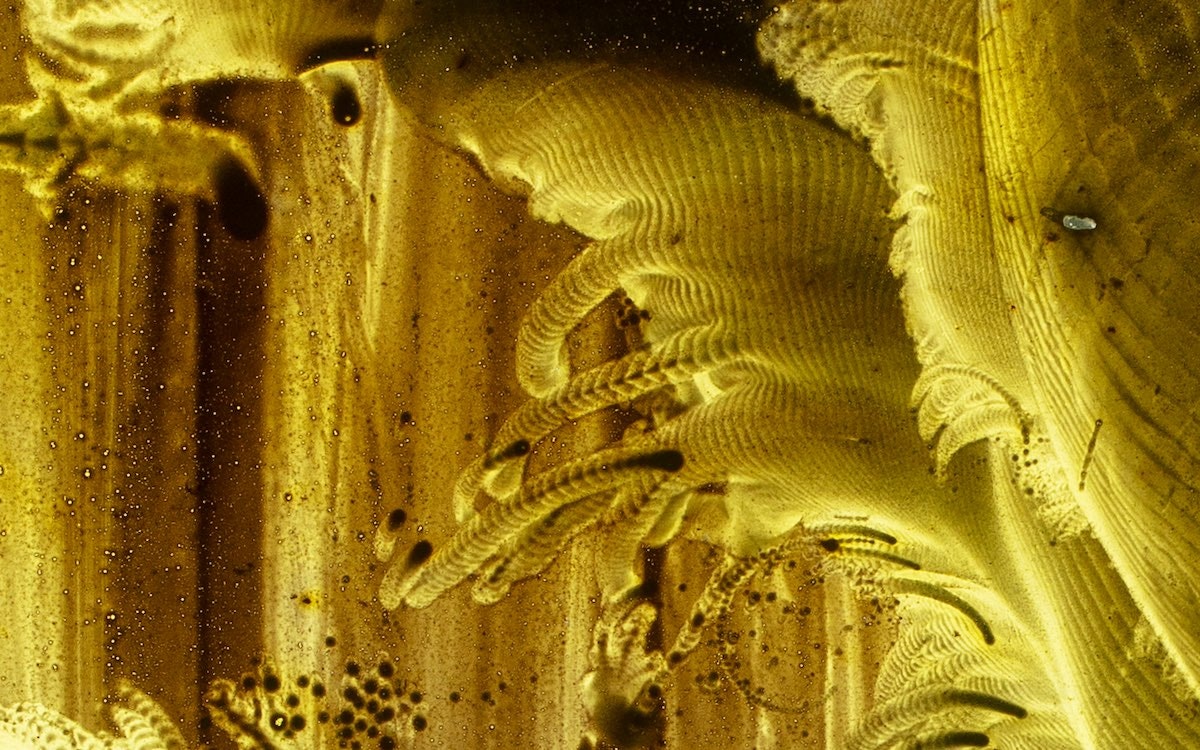 Scroll through the whole page to download all images before printing.
Scroll through the whole page to download all images before printing.Detail from an Impression Figure by Margaret Watts Hughes, pigment on glass, date unknown. Courtesy of Cyfarthfa Castle Museum and Art Gallery.
Alternatively, a bulge in the diaphragm on the smallest of the Eidophones may have been effected by means of air pressure, meaning that each of these details represents a manual/vocal gesture. This presents the intriguing possibility that these plates might constitute an aggregated and spatially arranged chorus of voices. Elsewhere in these images, Moiré-like patterns are sung into the pigment (these she named “cross-vibration figures“”), suggestive of the presence of overtones in her voice.
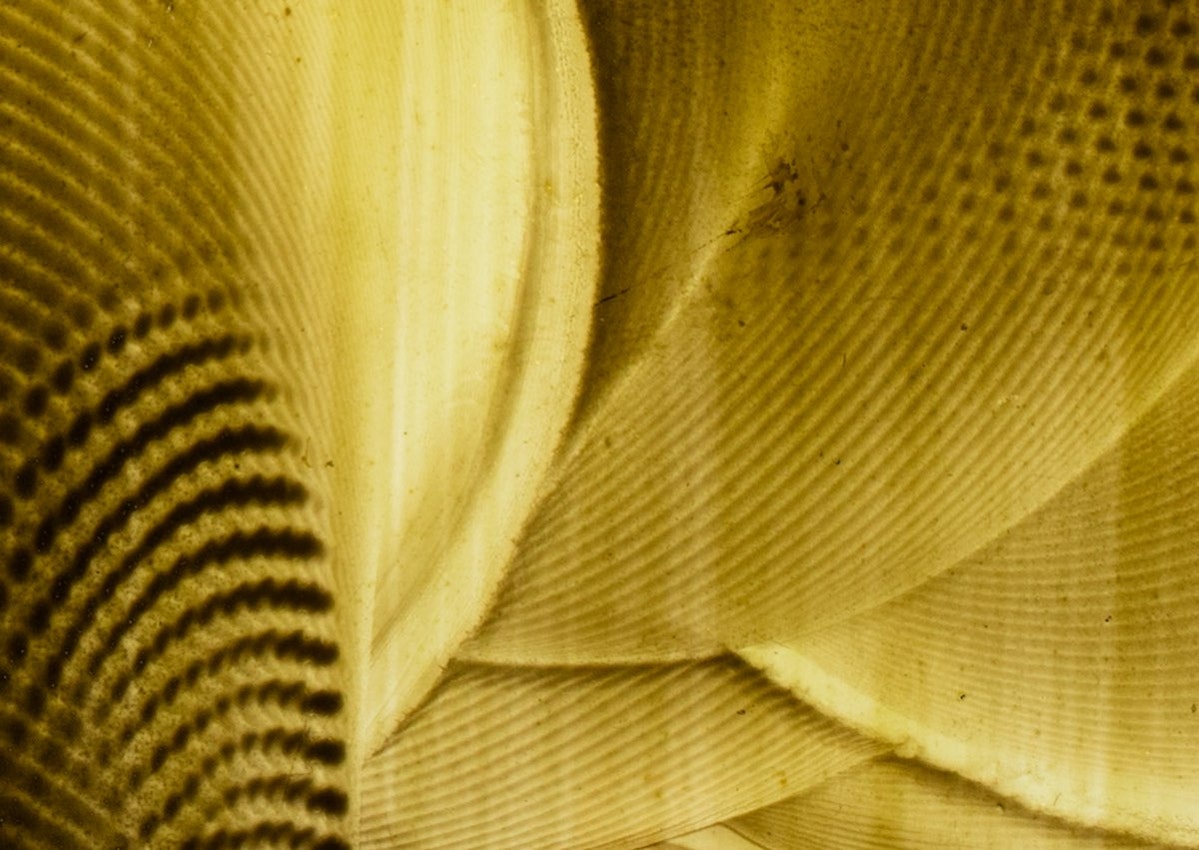 Scroll through the whole page to download all images before printing.
Scroll through the whole page to download all images before printing.Detail showing cross vibration, from an Impression Figure by Margaret Watts Hughes, pigment on glass, date unknown. Courtesy of Cyfarthfa Castle Museum and Art Gallery.
In a letter to the editor of the Spectator in 1889, the novelist Emilie Barrington writes enthusiastically of a visit she paid to Watts Hughes at the orphanage she ran in Islington, in North London. As an “ear-witness” account of the production of Impression Figures, it is as valuable as the Pall Mall article discussed above — but just as fascinating is the breathless description of the way that these works are displayed:
Instead of blinds or curtains drawn across the lower panes of the windows, there are wonderful designs in colour; strange, beautiful things — suggesting objects in Nature, but which are certainly neither exact repetitions nor imitations of anything in Nature.7
Barrington’s response is to something she describes as possessing a “touch of fairy land”, and that the Impression Figures
are more like, perhaps, what a dream might make out of the impressions left by Nature, perfectly drawn designs of shell-like forms, photographically precise renderings of shapes of which the exact originals were never seen by human eye on sea or land; such things as “Alice in Wonderland” might have come upon, had she tumbled down to the bottom of the sea.8
The positioning of these works in the windows of an orphanage could suggest that their purpose was more than simply decorative. Perhaps in direct reference to the windows of the Congregationalist Bethania chapel at Dowlais which Watts Hughes considered her second home, and perhaps in consonance with what Verity Hunt describes as the era’s privileging of “magical wonder” and enchantment in educational pursuits through optics and domestic display, these works were employed to perform the function of “illumination” in more than one sense of the word.9 Being aesthetically atypical (or perhaps unique) for the time, and born of the voice rather than hand, these figures strongly suggest that we read them as working within a spiritual/symbolic domain — even bordering on the divinatory when considered with their creator’s beliefs in mind. After all, Watts Hughes desired that her experiments might aid “by some slight degree, the revelation of yet another link in the great chain of the organised universe that, we are told in Holy Writ, took its shape in the voice of God.”10 Nature, and by implication God’s voice, had found its way into the acoustic sphere by way of the visual.
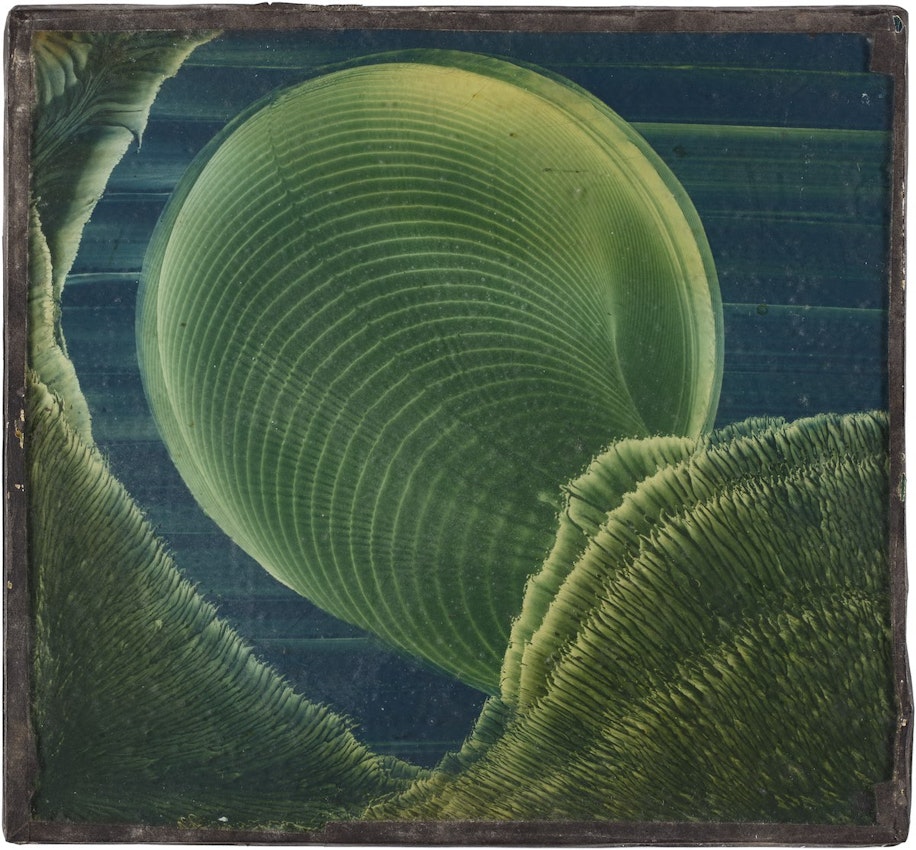 Scroll through the whole page to download all images before printing.
Scroll through the whole page to download all images before printing.Plant forms, an Impression Figure by Margaret Watts Hughes, pigment on glass, date unknown. Courtesy of Cyfarthfa Castle Museum and Art Gallery.
Early attempts at capturing “natural” sound could be crudely summarised as a history of speaking loudly and steadily into apertures and tubes, with perhaps the odd song to lighten the mood. However, these acts of capture were rarely understood as creative in and of themselves. The aesthetic “object” was almost always understood to be the qualities of the performed voice or instrument, as distinct from the transformative act of recording. Discussions of such media usually revolve around the concept of “fidelity”, of “original” compared to “copy”, but in the work of Watts Hughes we see a different kind of sound recording at play. Her capture of sound into shape never sees the final conversion back into sound that characterises more common modes of recording. There is no final playback, no “loss of fidelity” or “loss of being between original and copy”, as Jonathan Sterne writes of early sound media.11 There is, rather (due to the one-way migration of medium), a creation of something in its own right, a transformation rooted in a profound belief in the generative, incantatory power of the voice as an ineluctably spiritual phenomenon. Given their beauty and their richness of form and intention, it could be said that Margaret Watts Hughes’ extraordinary works are, despite being silent, possessed of a surfeit of being. Her Voice Figures may not sit comfortably within any of the disciplines of her day, but they nonetheless gesture toward, amongst many other things, practices that only evolved much later in sound and arts, which understand the recording process to be a transformational creative act in and of itself, rather than merely an act of “sound capture”. As such they deserve to be much more widely known.
Rob Mullender-Ross is an artist, researcher and educator, whose multidisciplinary practice explores sound in its multiple incarnations and interactions across sculpture, performance, installation, moving image and text. His PhD looked at how light and image has been used to create sound, framing this as an alternative history to experimental sound and image production. He is a member of CRISAP (Creative Research into Sound Arts Practice) at University of the Arts, London.
Imagery from this post is featured in
Affinities
our special book of images created to celebrate 10 years of The Public Domain Review.
500+ images – 368 pages
Large format – Hardcover with inset image





